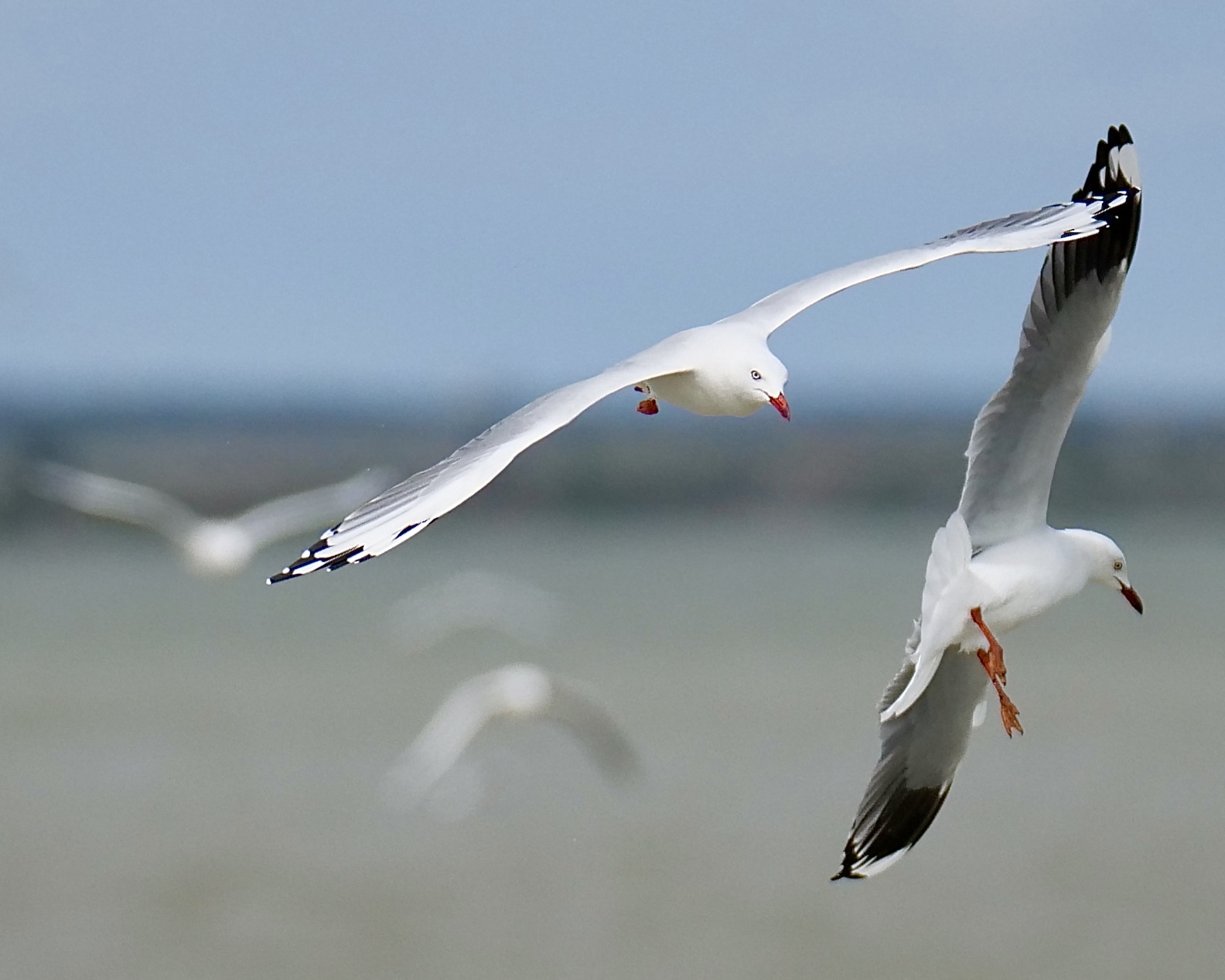When an Australian thinks of seagulls, the relevant species is almost certainly our most common, emblematic one.
Chroicocephalus novaehollandiae – the Silver gull – has prospered mightily, post-1788.
Arguably, this highly-adaptable bird should no longer be described as a “seagull”.
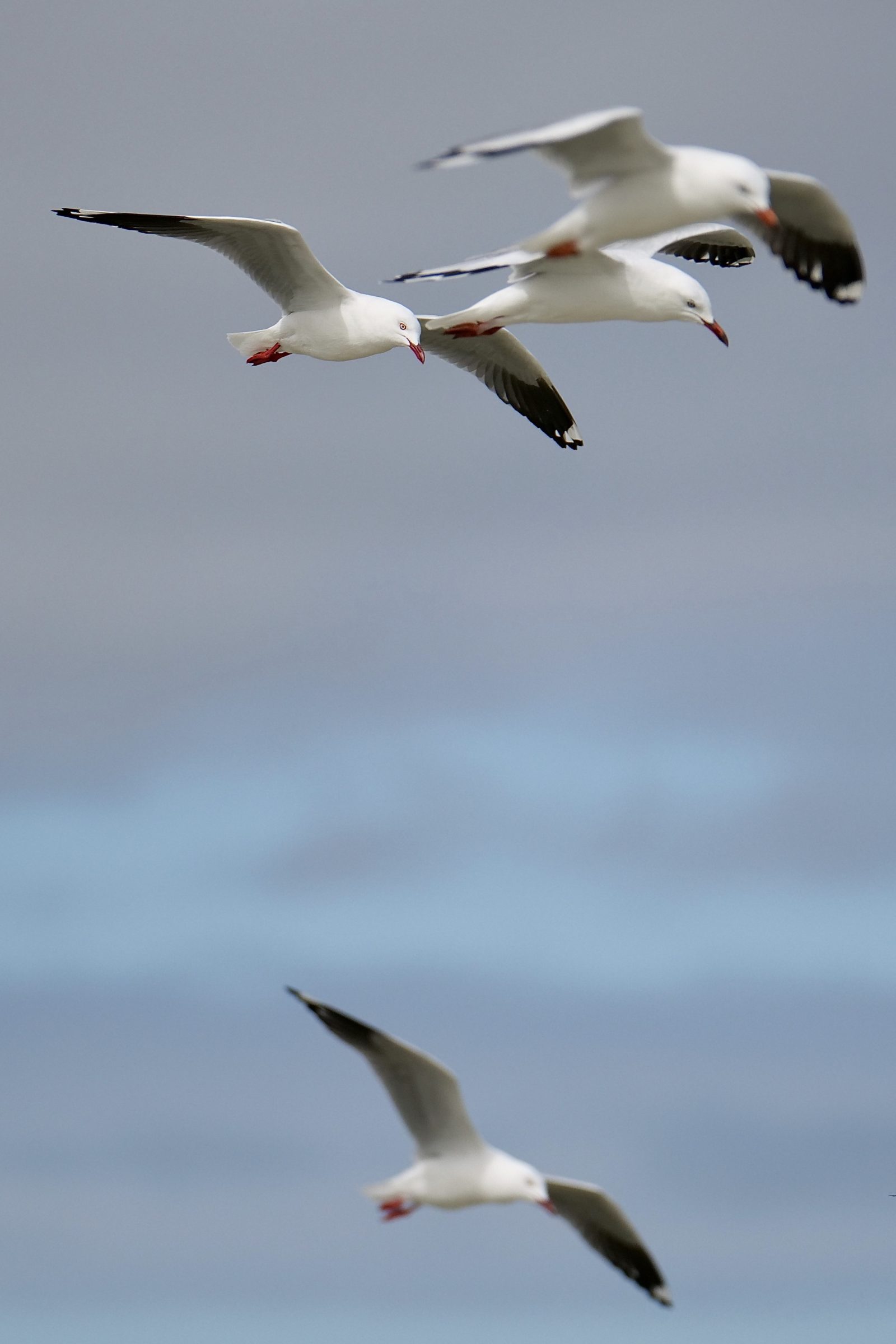
Particularly over the last several decades, as humans have provided progressively more edible waste, silver gulls have expanded their range from near-coastal places to any urban place, including ones thousands of kilometres inland.
Many members of Australia’s much-increased Silver gull population are scavengers, primarily, even exclusively.
An Alice Springs rubbish dump could offer a gull an easier, more energy-efficient life than would a splendidly wild ocean shore.
Why hunt marine creatures when the pickings are so rich at the local rubbish tip, nearest rubbish bin, or any place where humans flock to eat “take away” or “al fresco”?
However, some Silver gulls – this post’s stars among them – do still live near the coast, and do still hunt for “live” seafood.
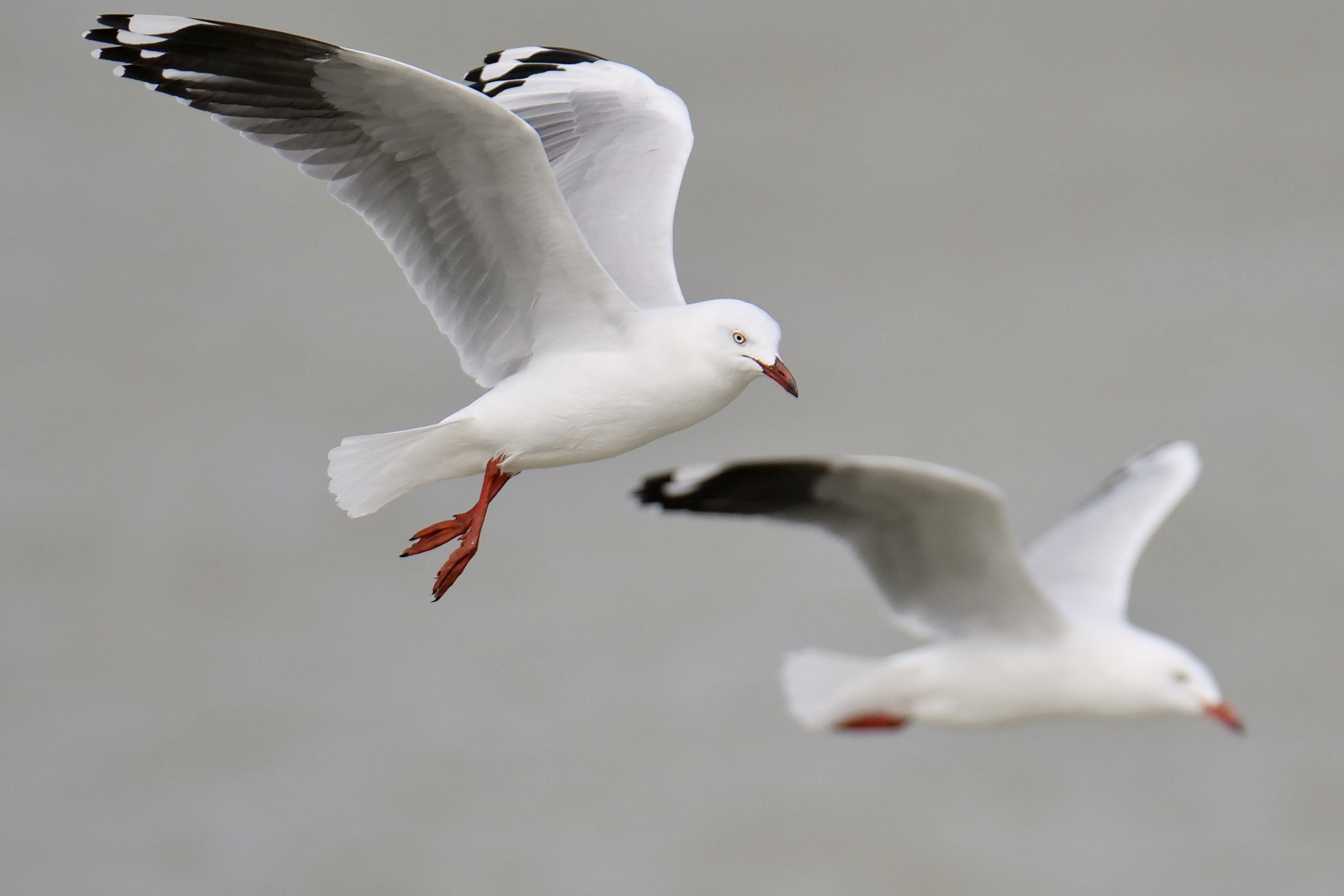
A boat’s wake can provide some unwitting assistance.
This post’s photos were all taken from the back of the boat, on its “back to Goolwa” leg of our Coorong trip on March 30 2022.
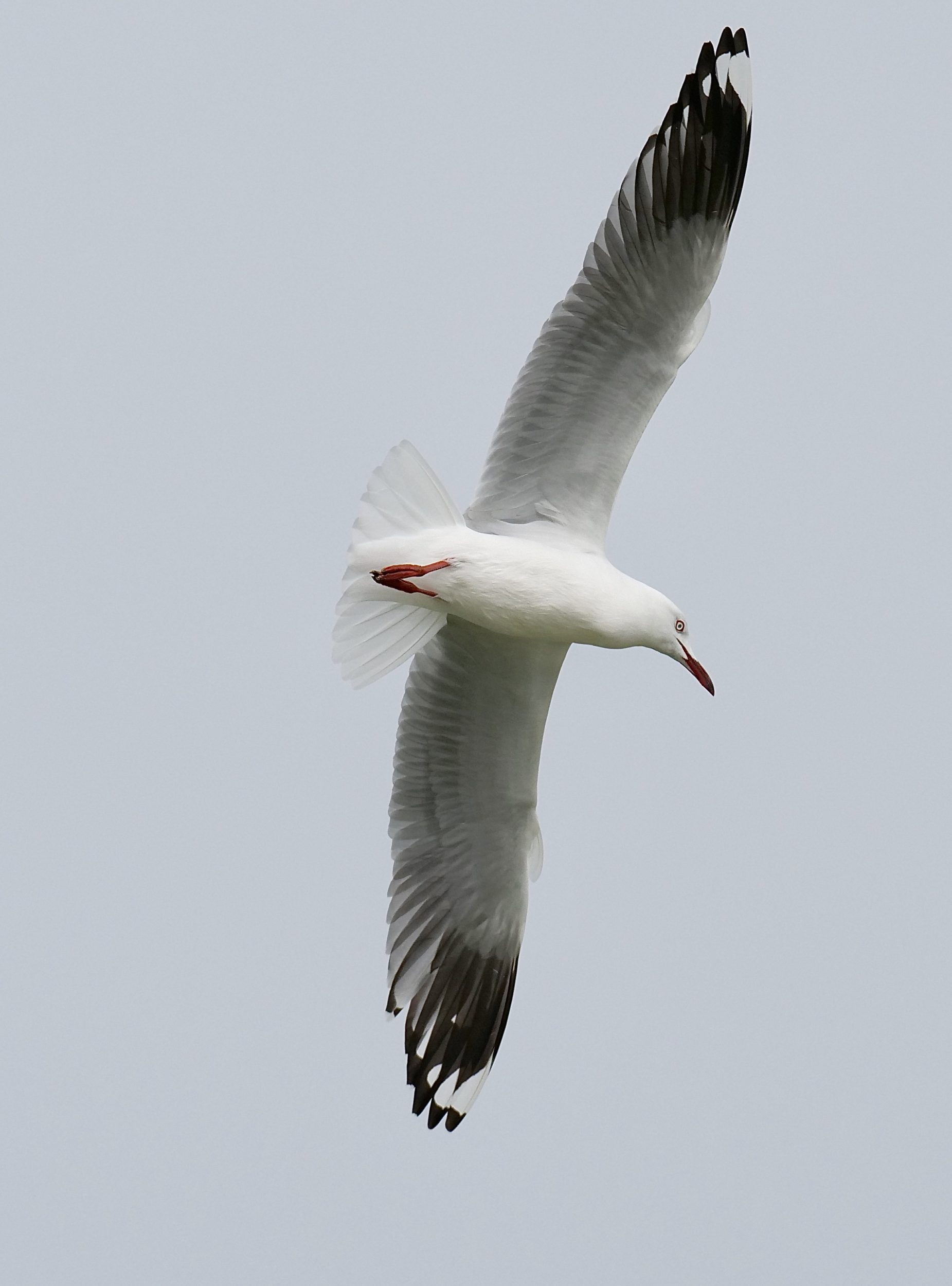
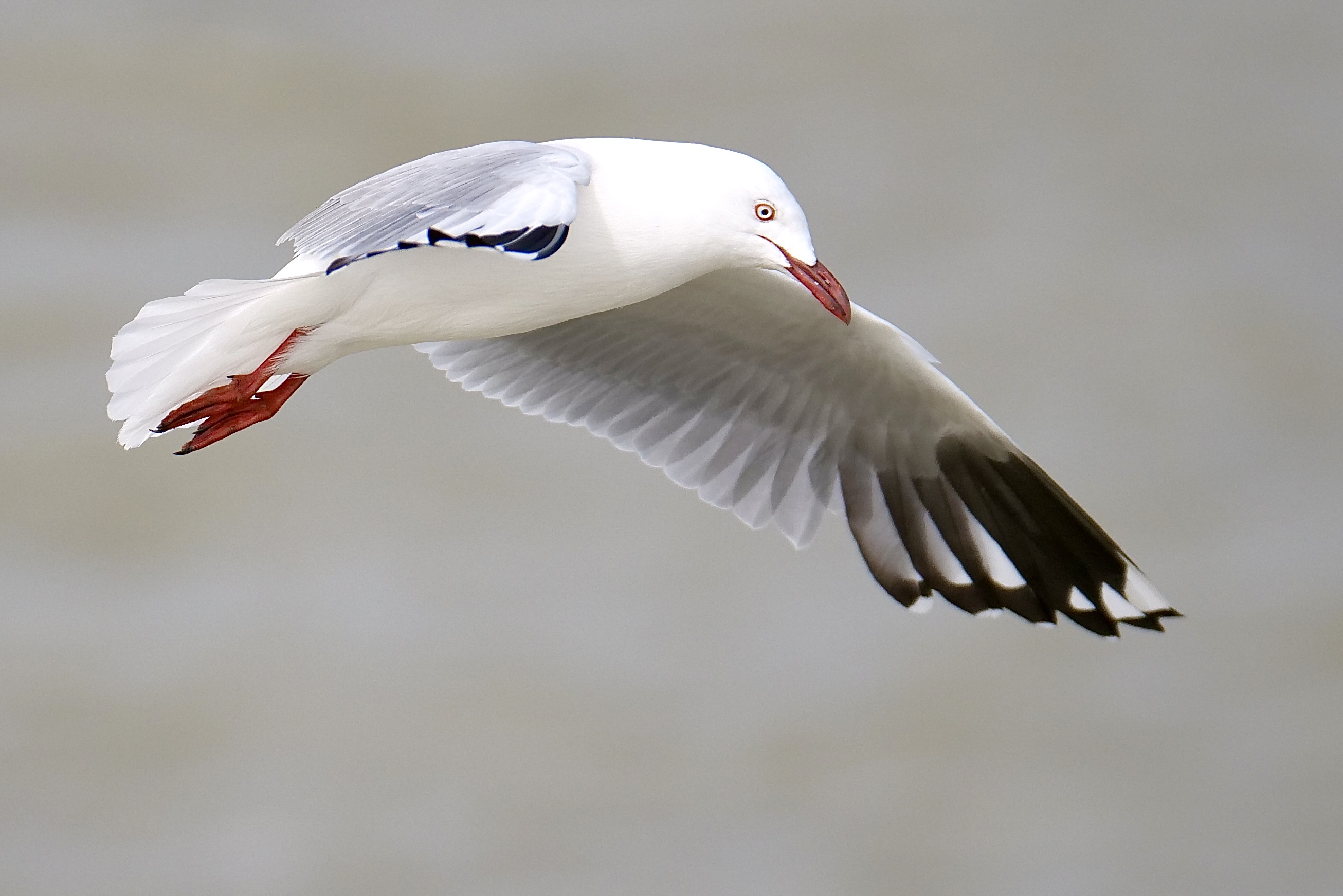
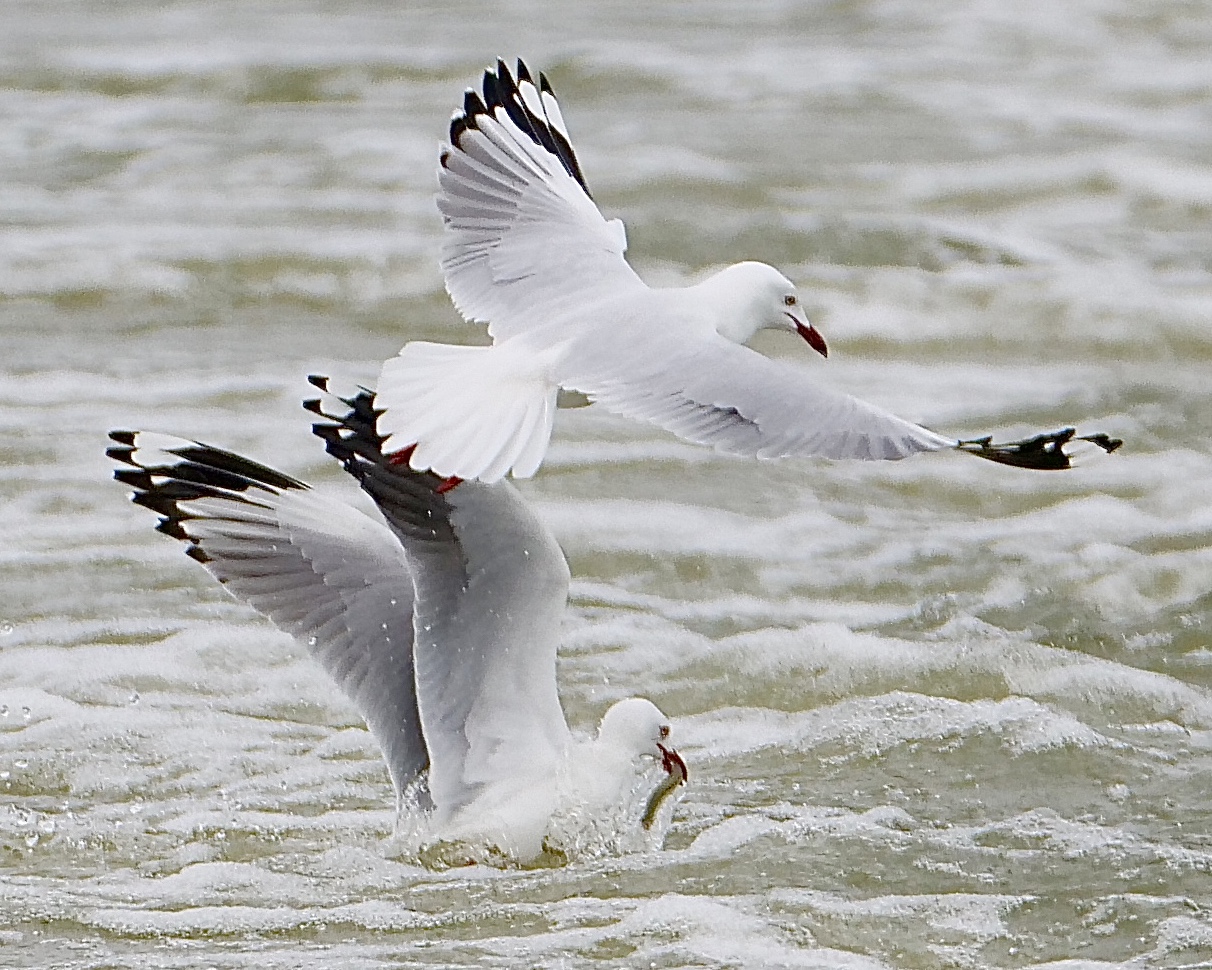
Musical bonus
You probably already know the song with words; Song to a Seagull is the titlepiece on Joni Mitchell’s first album.
Her spoken introduction to it, from a 1967 performance in England:
Maybe if you were raised in a small town in the country, and you were suddenly uprooted and planted in a big city… at first it was wonderful and there were all sorts of things like escalators and elevators and supermarkets and the corner discotheque and buses and taxis and double-decker red buses. But maybe one day you wake up and there’s soot on your window ledge and you’ve just dusted it off the day before and, I don’t know that this happens here, but I woke up one day and looked out my window down into the street and they’d put plastic plants in my planter. That was sort of the last straw so… being very romantic I said “well then I guess I’m just going to have to leave this city with its plastic plants and its dust on the window ledge. Maybe I’ll go off into the woods and become a hermit and be very independent and live off the land and eat wild raspberries and strawberries and Saskatoon berries, and be as free as a proverbial bird.”
(this page on Joni Mitchell’s site provides easy access to all of her recorded songs’ lyrics, plus footnotes to many of them)
An equally eloquent “seagull song” is Mal Waldron’s wordless but very evocative The Seagulls of Kristiansund, inspired by watching and hearing coastal gulls in Norway.
Waldron (1925-2002) is routinely referred to as “Billie Holiday’s last primary piano accompanist”, but he was much more than that.
A pianist with a singular “voice”, Waldron continued to make fine recordings for all 42 of his “post-Billie” years.
Of many versions of his seagull song, none is finer than the one on Waldron’s album One More Time.
This is a January 2002 duet with a frequent collaborator, the great French bassist Jean-Jacques Avenel (1948-2014)
